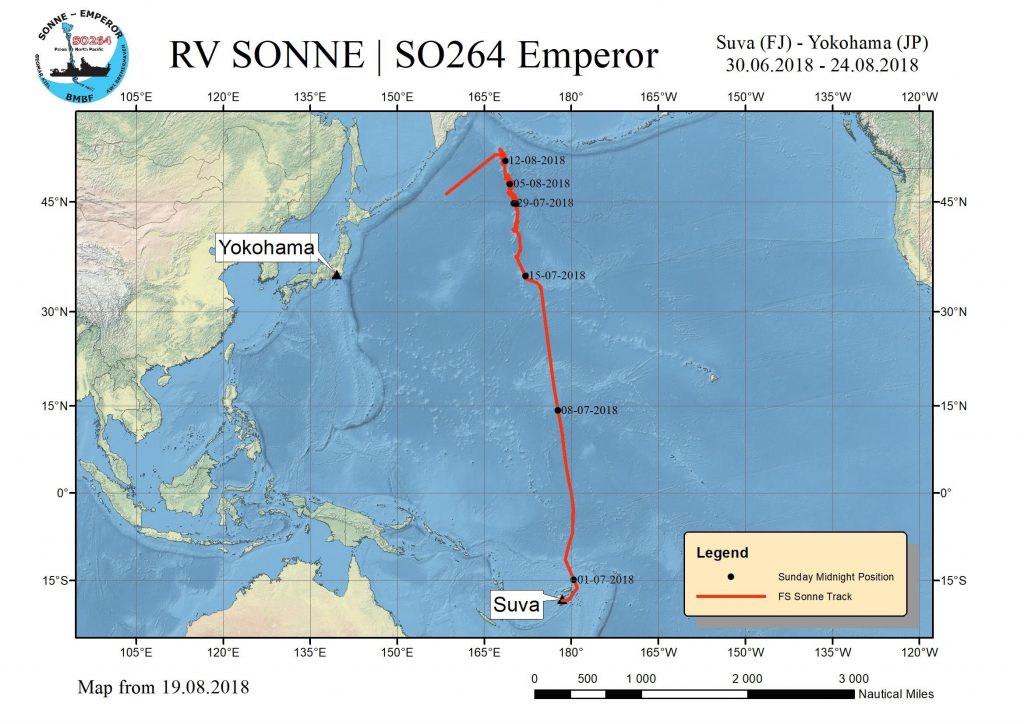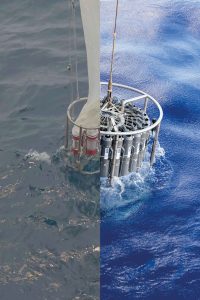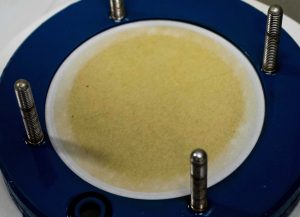In a previous blog “Looking into the past to learn about the future” (Read this one first if you haven’t!), you learned why it is important for scientists to study climates of the past, and the significance of our coring locations in the North Pacific Ocean. In other blog entries, you read about the instruments we use to sample the seafloor and the water column. But how do we use these samples to make inferences about past climate when we can’t measure environmental parameters directly? Isn’t it a stretch to go from elemental ratios in the shell of a microscopic plankton, to theories about changing ocean circulation, temperature, or salinity?

Cruise track for SO264.
As a community of paleoceanographers, we do our best to approximate these environmental parameters by developing and using proxies— measurable variables that correlate with the variables of interest. If we can measure multiple proxies in the sediments that correlate with different variables of the climate system, then we will have the information necessary to make a detailed reconstruction of the climate.
But—before we can trust a proxy to reconstruct changing climate through time, we need to test how it responds to different ocean conditions in the present day ocean. This “test” is called a proxy calibration, and is the purpose of my being on this cruise. To really calibrate a proxy and understand how it responds to its environment, we need samples from all over the global ocean that cover many different ocean regimes— from cold to warm, fresh to salty, nutrient poor to nutrient rich, and open ocean to coastal environments. The giant latitudinal transect from Fiji (20ºS) to the Aleutian Islands (50ºN) through the Pacific Ocean provides a very unique opportunity to test new proxies and re-evaluate old ones.
This particular cruise route is fascinating, not only because we get to measure properties of the water column as we move across major ocean boundaries, but we can actually see and feel these changes! Over the first two weeks we travelled through the so-called Pacific Warm Pool, which has surface water temperatures reaching almost 30ºC —and air temperatures that were too hot to comfortably relax on the sun deck! These conditions extended until 35ºN where we crossed the largest boundary of our journey: where the warm, subtropical Kuroshio current meets the cold, subarctic Oyashio current. The temperature dropped from the mid 20’s to 10ºC in a matter of a few days. We could also observe a change in ocean colour from the blackish-cobalt blue of the Kuroshio — kuro “black” shio “stream” — to the duller green of the Oyashio. Kuroshio is low in biological productivity, causing its dark colour, while the Oyashio current is fed by upwelled, nutrient-rich waters that provide a nice habitat for surface-dwelling life to thrive.

The striking change in ocean colour: from the dark blue of the Kuroshio current (right) to the duller green of the Oyashio current (left).
Along this optimal transect, I am collecting samples for proxies that derive from specific fatty compounds called alkenones. These are long chain carbon molecules (unsaturated ketones) present only in coccolithophores, a type of calcite-forming phytoplankton responsible for the chalky cliffs of Dover. These organisms up-regulate or down-regulate the different types of alkenones based on the temperature of the waters they formed their calcium carbonate shells in. There may also be a correlation between salinity and relative ratios of hydrogen isotopes (𝛿-Deuterium) in the alkenones, so this is a new proxy we are trying to investigate.

A filter sample that has filled up with suspended particulate matter from the surface ocean. Photo: Steffen NiemannTo collect samples of alkenone-bearing coccolithophores along the ship’s transect, I am filtering seawater that is pumped through the ship’s sea water intake tap. Every hour or two, the filter fills up with whatever phytoplankton were living in the sea surface of the waters we steam through. These samples will later be analyzed for the relative alkenone ratios and 𝛿-Deuterium, and compared to the temperature and salinity of the seawater from respective sample locations.

A scientist removing the sample from the seawater filtration system. Photo: Steffen Niemann
Results from this cruise will be compared with similar samples from all of the world’s major ocean basins — allowing us to globally calibrate the proxies. With the improved understanding of how a given proxy responds to different environmental conditions, we have a better basis for applying them to sediment samples for reconstructions of past climates. The more proxies we develop and have at our finger tips, the more detail we will have in our understanding of our planet’s history.
The chemical structure of a tri-unsaturated alkenone.
Stefanie Mellon
